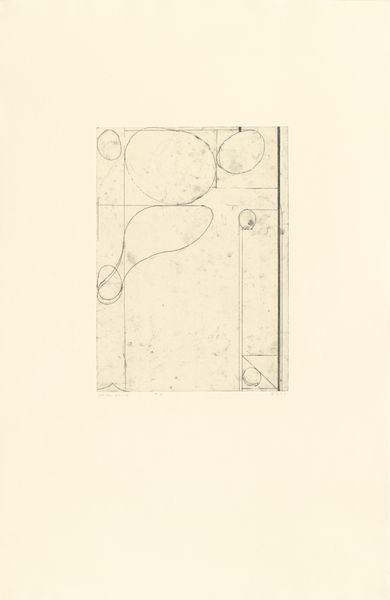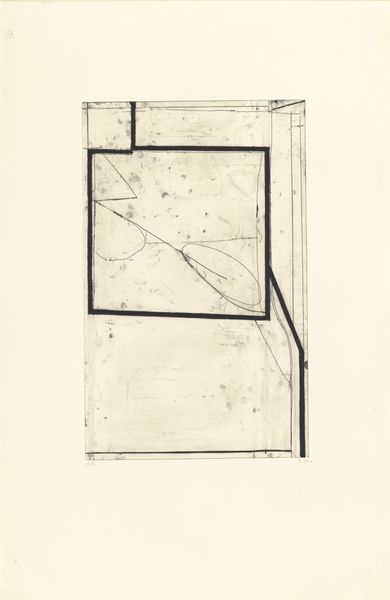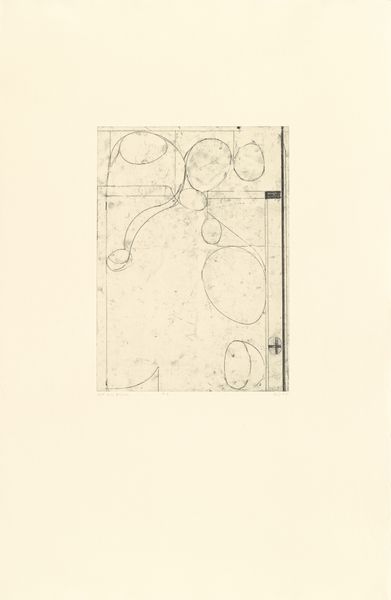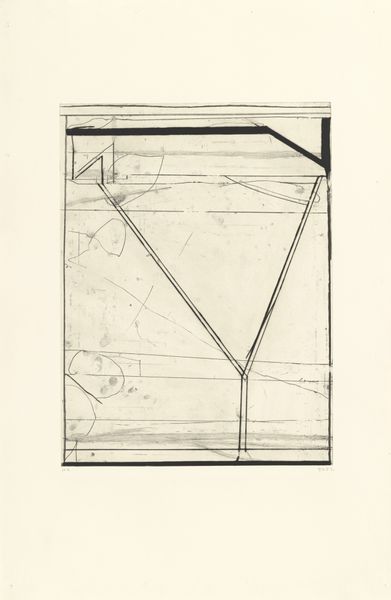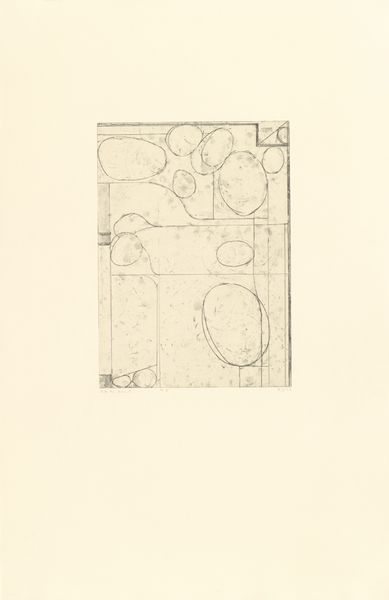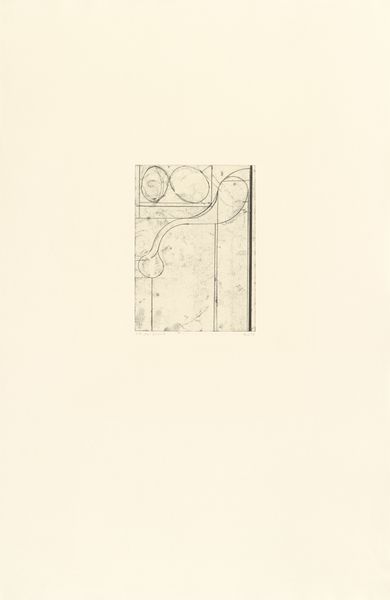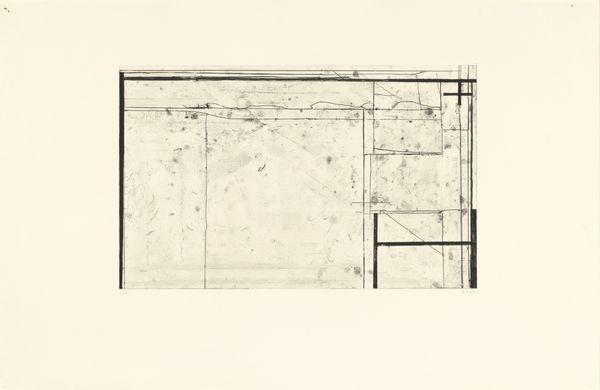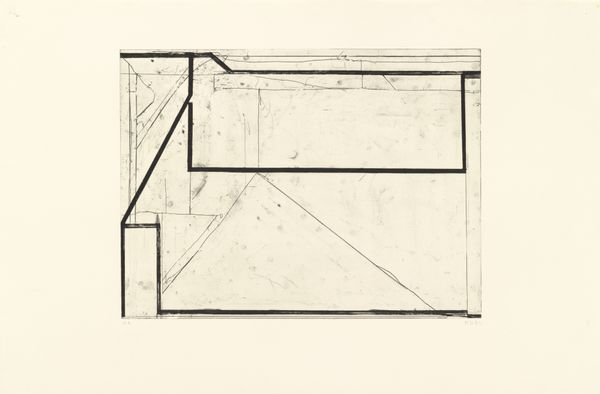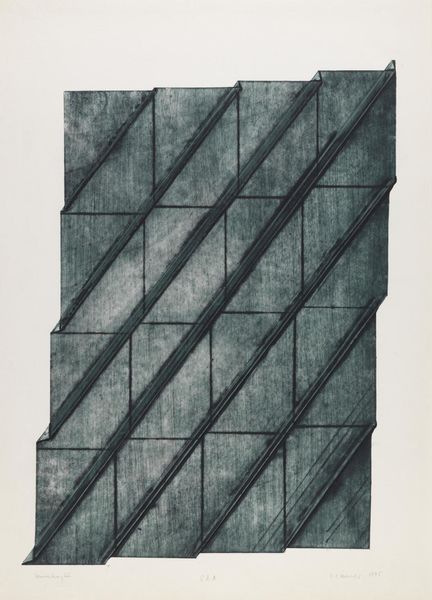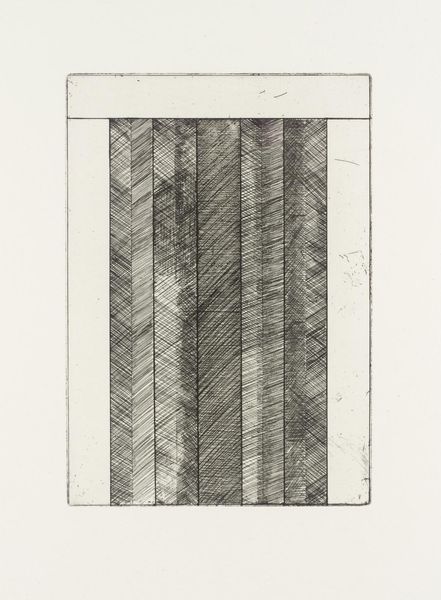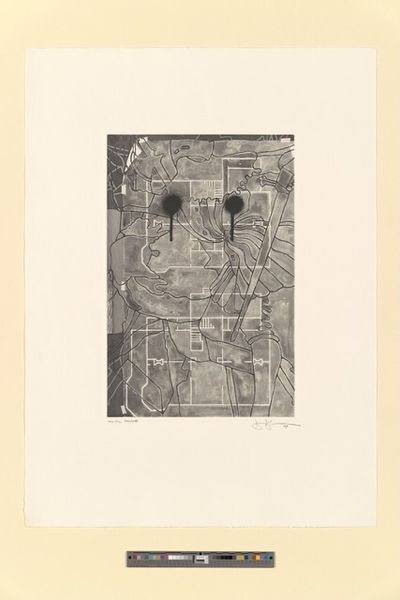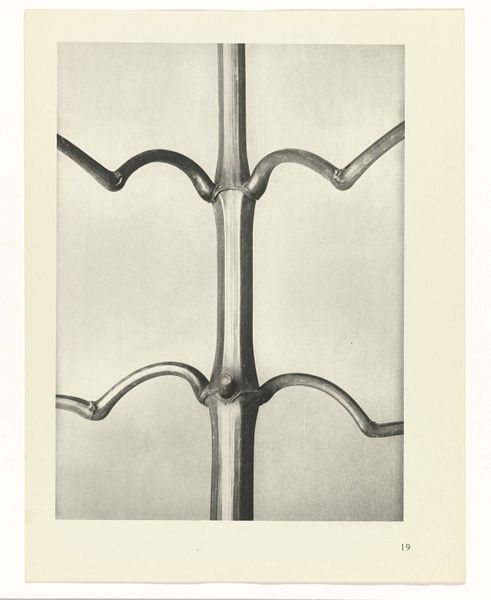
#
bay-area-figurative-movement
Dimensions: image: 60.6 x 43.8 cm (23 7/8 x 17 1/4 in.) sheet: 90.5 x 66 cm (35 5/8 x 26 in.)
Copyright: National Gallery of Art: CC0 1.0
Curator: My first impression? It feels like peering at an ancient, fragmented map. I wonder what those markings are charting? Editor: Good eye. This print, an "Aquatint with Drypoint Halo," was created by Richard Diebenkorn in 1978. Diebenkorn worked extensively with printmaking techniques like aquatint, drypoint, and etching, layering them for complex surfaces, as we can clearly observe here. Curator: The interplay of dark and light creates a palpable sense of depth. That small circular form, almost like a target, at the lower left - does it carry a particular symbolic charge? Editor: Knowing Diebenkorn, I’d suggest looking less for explicit symbolism and more for a dialogue with space and form. His work, especially around this time, focused on geometric structures playing against fields of subtle tone and texture. Perhaps it represents a point of focus, an anchor within the visual field, or a sort of vanishing point. Think of his Ocean Park series—architecture and geography abstracted to their essence. Curator: Vanishing points evoke the very act of perceiving itself. Do you sense the influence of earlier abstract expressionists in this composition? There's a rawness in the linework... a sort of gestural immediacy, yet carefully structured. Editor: Definitely. Diebenkorn, despite shifting away from representational painting later in his career, always carried that Abstract Expressionist DNA, especially from Clyfford Still. But notice how he’s controlling the chaos here; there's a geometry underpinning it all. Each mark feels deliberate. Also note the monochrome quality adding drama. Curator: So, the halo isn’t a literal halo but more of a... textural effect created by the drypoint technique? I see how the different lines interlock; they might be evocative of ancient architectural structures and cityscapes seen from above. It may suggest an inherent desire to structure our environment or world into something predictable Editor: Precisely. The 'halo' is about how drypoint raises a burr on the plate that catches the ink, creating a soft, almost blurred edge. This, coupled with the geometric shapes, builds up that impression of an abstracted city plan. His forms always hover in that sweet spot between representation and pure abstraction, don't you agree? Curator: Agreed. I came with certain expectations about Diebenkorn, based on his paintings, and I like how this has broadened my sense of his overall project. Editor: Exactly. I feel a newfound appreciation for his printmaking, recognizing it's less of an adjunct to his painting, but an integral part of how he understood shape, light, and structure.
Comments
No comments
Be the first to comment and join the conversation on the ultimate creative platform.
